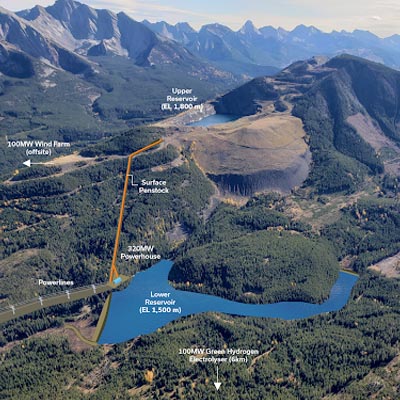Boom times in Fort Nelson
The discovery of shale gas in the Horn River basin has made Fort Nelson B.C.'s fastest growing community.
Fort Nelson, located in the northeastern corner of B.C. at mile 300 of the Alaska Highway, is still considered to be a small town—but the numbers of residents are on the rise, and they’re increasing quickly. The Northern Rockies Regional Municipality (NRRM), which includes Fort Nelson, Toad River, Prophet River and Muncho Lake, is now considered to be B.C.’s fastest growing region. As of this past spring, the population had grown to 6,200, with Fort Nelson being the largest and fastest growing community in the region.
The reason behind NRRM’s growth is the development of the shale gas reserves found just north of Fort Nelson in the Horn River Basin. Some estimates show as much as 500 trillion cubic feet of gas is in that basin, which translates into several billion dollars’ worth of economic activity. That means more jobs, more people and more pressure on Fort Nelson’s infrastructure.
“Fort Nelson has always been a resources community,” said Jaylene Arnold, economic development and tourism officer with NRRM.
Forestry was the leading industry in this area for many years, until it took a downturn in the middle of the last decade. In 2008 two of the main mills closed, eliminating at least 10 per cent of the area’s jobs. But Arnold said the discovery of shale gas was announced shortly after that, which prevented many people from leaving.
“The majority of the forestry workers were absorbed by the oil and gas industry,” said Arnold, “and since then the area has continued to grow.”
Predictions indicate that trend is expected to continue, which is positive from an economic standpoint, but scary for a town that’s trying to accommodate an ever- increasing fly-in/fly-out population.
“There’s a heck of a lot more people out there [in camps] than we can put our finger on, and the only way we can gauge that number is through the airport,” said Arnold.
Hence the creation of the Northern Rockies Regional Airport business plan, which was finalized in September 2011. This plan states that air traffic is expected to double before 2020 and aircraft movements are expected to increase five per cent annually. Over the past five years, operating costs have escalated by 35 per cent, stressing the need for upgrades, expansion and increased revenue. In 2011, the airport was forecasting a 20 percent increase in passengers.
Jack Stevenson, director of community development and planning for NRRM, spoke at the B.C. Oil and Gas Conference in March. He said the airport was planning for 21,000 passengers to arrive on Boeing 737s in 2012, and that number doesn’t include passengers on charter planes or small aircraft.
“It’s changing the dynamics of our airport,” said Arnold. “It’s a whole new area to look at.”
Fort Nelson’s rapid growth causes a strain on other areas as well—namely roads, housing and health care. With only three doctors on staff and a hospital that needs upgrading, the patient load is becoming hard to handle.
“We’ve managed so far, but we’re facing an infrastructure deficit,” said Arnold. “We need housing, and that means water and sewer upgrades. It’s a domino effect.”
Mayor Bill Streeper said the town’s main street is a provincial highway, which poses its own set of challenges.
“The traffic load on our streets has gone up 300 per cent,” said Streeper. “We have an industrial subdivision that is starting to fill up and we are having problems with residential housing. We are having a tough time financially, but we have been in negotiations with the provincial government and that’s looking positive. The government has indicated it’s on side.”
Streeper is referring to an agreement with the province that would provide Fort Nelson with a share of oil and gas royalties, allowing local government to fund municipal infrastructure. An economic profile released in spring 2011 reinforces the need for several upgrades, including road improvements andn water and sewer upgrades, as well as the implementation of the Alaska Highway Transportation Corridor Study and the Residential Housing Strategy.
Fortunately, the schools are in good shape. Although enrollment is up, Arnold credits good planning in the past as the reason schools are able to withstand the current boom—plus the fact that those moving to Fort Nelson aren’t necessarily bringing their families.
However, that will likely change as the community grows. Arnold said the region recognizes the importance of having young families in the community, but there must be some benefits in order to attract them.
“More family-focused things are being developed,” said Arnold. “The recreation centre was redone and that’s been a huge success. There has been lots of work done to the parks, including the addition of a [water] spray park.”
It seems most residents are not critical of the boom. Rather, they see the benefits that come with a thriving economy.
“People just want to see some improvements and results,” said Arnold. “For people to move here and stay, there needs to be options.”
The Northern Rockies Regional Municipality is the first Regional Municipality in B.C., and was incorporated as such in February 2009. This region encompasses approximately 10 per cent of B.C.’s landmass and includes the former entities of the Town of Fort Nelson and the Northern Rockies Regional District.
For more information on the Rockies Regional Municipality, visit NorthernRockies.ca




